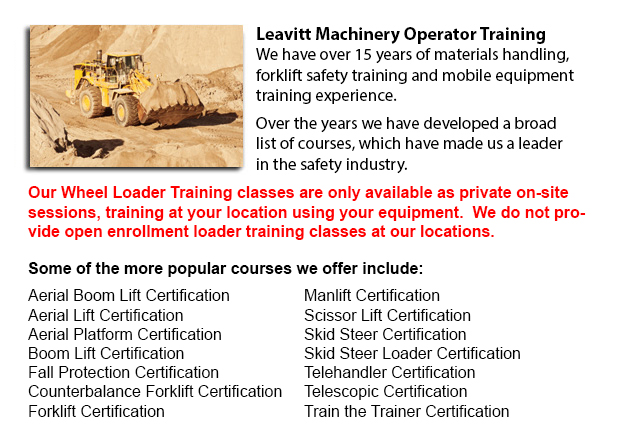
Forklifts are accessible in various load capacities and several units. Most forklifts in a regular warehouse situation have load capacities between 1-5 tons. Bigger scale units are used for heavier loads, like for instance loading shipping containers, may have up to fifty tons lift capacity.
The operator could make use of a control to be able to lower and raise the forks, that could also be called "tines or blades". The operator of the forklift could tilt the mast so as to compensate for a heavy loads tendency to tilt the blades downward. Tilt provides an ability to operate on uneven ground also. There are yearly contests intended for skilled lift truck operators to compete in timed challenges as well as obstacle courses at regional lift truck rodeo events.
General use
All forklifts are rated for safety. There is a specific load limit and a specified forward center of gravity. This very important info is provided by the maker and positioned on the nameplate. It is important loads do not go over these details. It is illegal in numerous jurisdictions to tamper with or remove the nameplate without getting permission from the forklift maker.
Most lift trucks have rear-wheel steering so as to enhance maneuverability. This is very helpful within confined spaces and tight cornering areas. This kind of steering varies quite a bit from a driver's first experience along with different vehicles. For the reason that there is no caster action while steering, it is no required to utilize steering force so as to maintain a constant rate of turn.
Unsteadiness is one more unique characteristic of forklift use. A continuously varying centre of gravity occurs with each and every movement of the load amid the forklift and the load and they must be considered a unit during utilization. A lift truck with a raised load has centrifugal and gravitational forces that may converge to cause a disastrous tipping accident. So as to prevent this possibility, a forklift must never negotiate a turn at speed with its load raised.
Forklifts are carefully built with a certain load limit meant for the forks with the limit lowering with undercutting of the load. This means that the freight does not butt against the fork "L" and would decrease with the elevation of the blade. Generally, a loading plate to consult for loading reference is situated on the forklift. It is dangerous to use a lift truck as a personnel lift without first fitting it with specific safety equipment like for instance a "cage" or "cherry picker."
Lift truck utilize in warehouse and distribution centers
Lift trucks are an important part of distribution centers and warehouses. It is vital that the work surroundings they are located in is designed in order to accommodate their efficient and safe movement. With Drive-In/Drive-Thru Racking, a lift truck must go in a storage bay which is many pallet positions deep to put down or obtain a pallet. Operators are often guided into the bay through rails on the floor and the pallet is positioned on cantilevered arms or rails. These tight manoeuvres need skillful operators to be able to complete the task efficiently and safely. Since each pallet needs the truck to enter the storage structure, damage done here is more common than with other types of storage. Whenever designing a drive-in system, considering the measurements of the blade truck, as well as overall width and mast width, have to be well thought out in order to make certain all aspects of a safe and effective storage facility.
-
Forklift Certification Schools Penticton
Forklift Certification Schools Penticton - In North America, forklift certification is mandatory, making forklift training programs essential for both the business and their employees working as operators of forklifts. Forklift training focuses on sa... More -
Telehandler Training Courses Penticton
Telehandler Training Courses Penticton - The employer has the responsibility to make sure that their personnel are trained to work proficiently utilizing telehandler machinery. The workers have to be assessed for their ability to utilize the machine.... More -
Certified Fall Protection Training in Penticton
There are many injuries at work linked to falling and lots of fall-related deaths reported each and every year. Most of these instances might have been prevented with better training, better precautions in place, and by properly equipping employees b... More -
Zoom Boom Training Penticton
Zoom Boom Training Penticton - Zoom Boom Training is designed to train operators on variable reach forklifts. The objectives of the training are to impart an understanding of the physics of the machine, and to outline the operator's job. This course... More -
Crane Training Schools Penticton
Crane Training Schools Penticton - We have designed various Mobile Crane Operation programs at our Crane Training Schools. These programs are recommended for the experienced operator who needs re-certification or certification, and for inexperienced... More -
Aerial Lift, Boom Lift, Man Lift, Scissor Lift Training in Penticton
Lift tables or also referred to as scissor hoists can lift up both individuals and materials vertically. They are normally utilized in industrial, construction and commercial environments. Normally, the use of a scissor forklift is to lift and lower... More -
Forklift Training Program Penticton
Forklift Training Program Penticton - The forklift is a common powered industrial vehicle which is in wide use nowadays. They are occasionally known as hi los, lift trucks or jitneys. A departments store will utilize the forklift to unload and load m... More -
Overhead Crane Training Penticton
Overhead Crane Training Penticton - An overhead crane is a large crane used to move and lift huge, heavy objects that cannot be lifted by hand. An overhead crane is normally fixed in position while in use. These machines are capable of moving huge vo... More

Forklift Training Penticton
TOLL FREE: 1-888-254-6157
Penticton, British Columbia
forklifttrainingpenticton.com
Email Us
About Us


